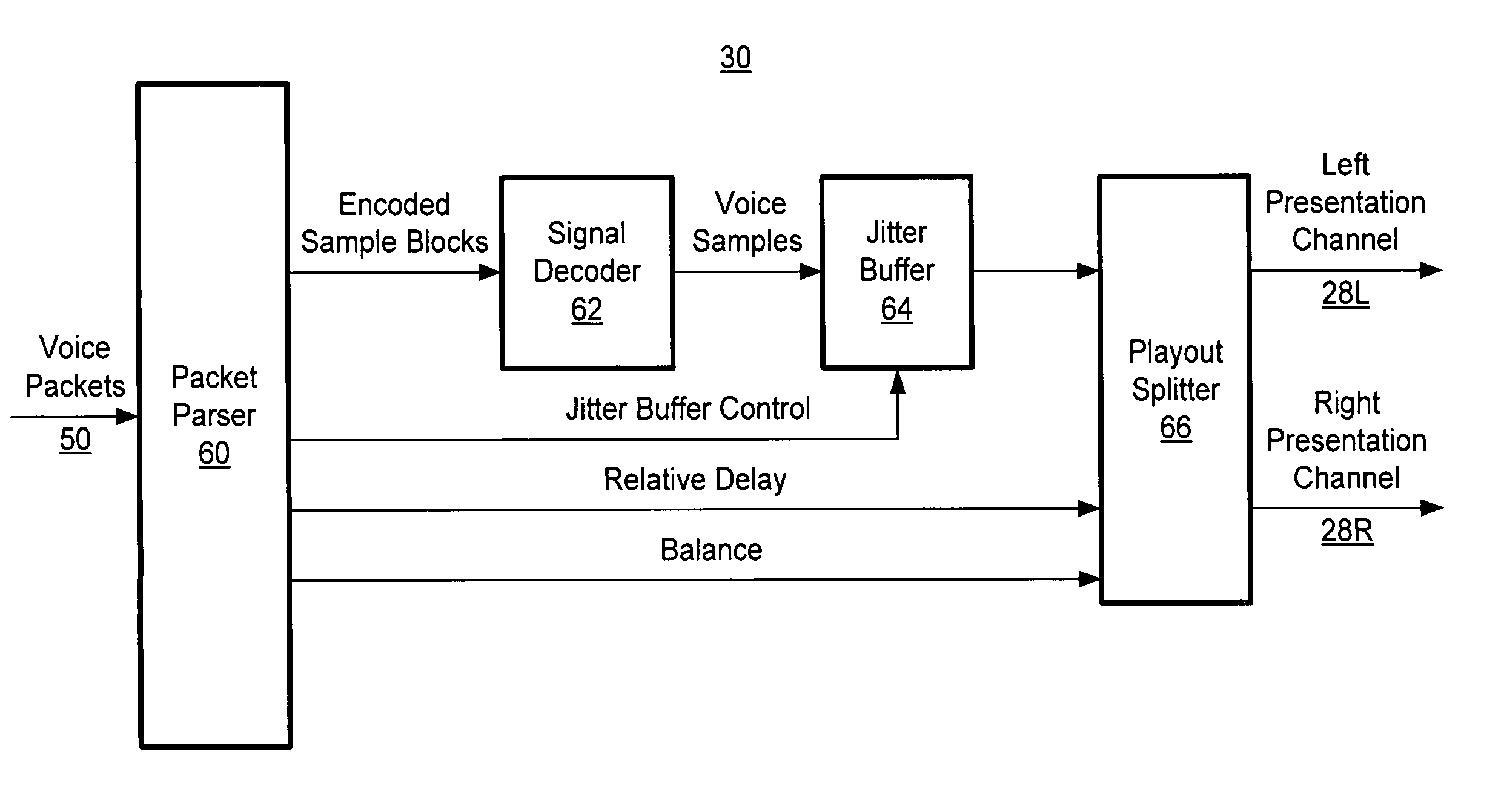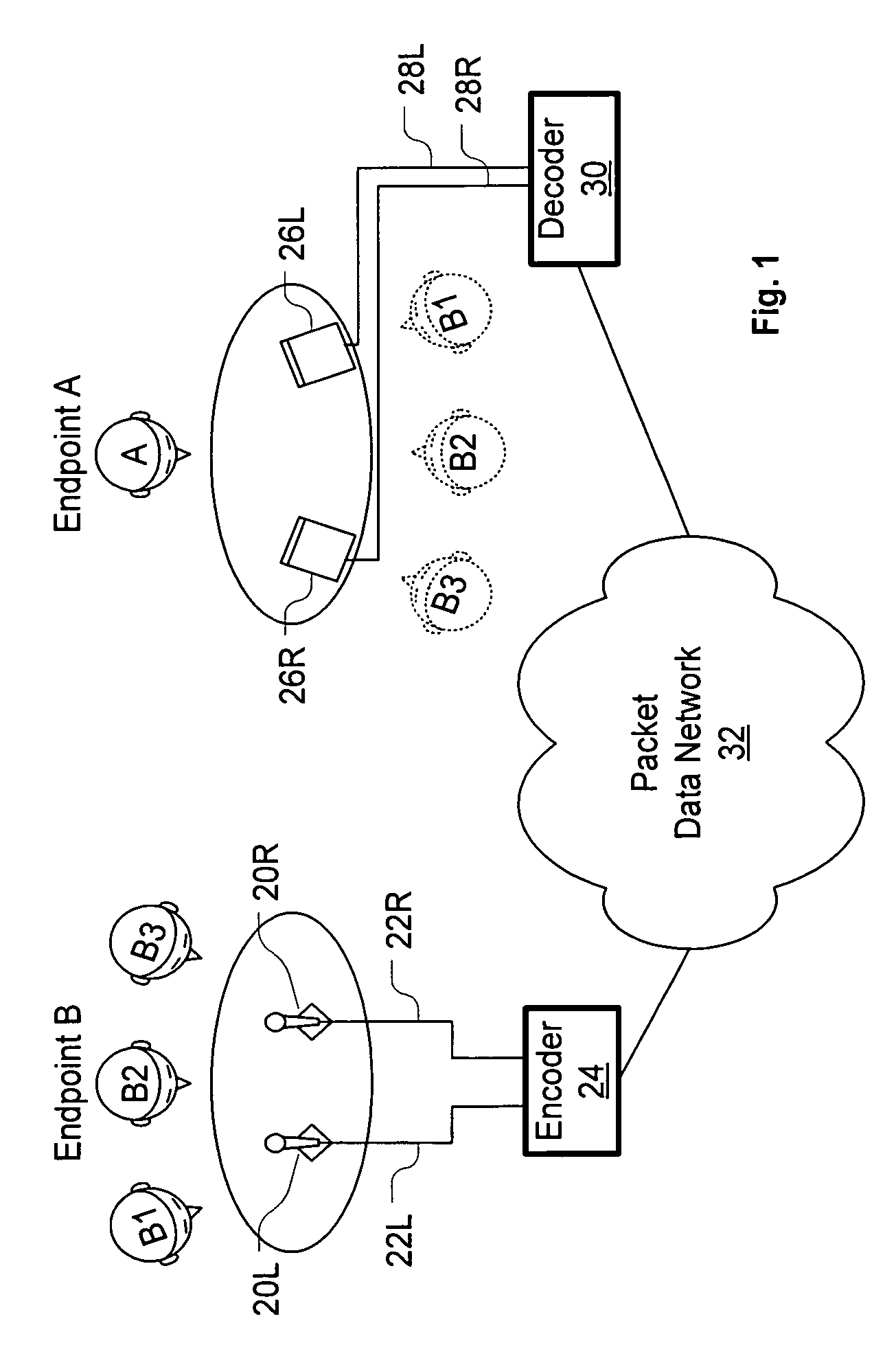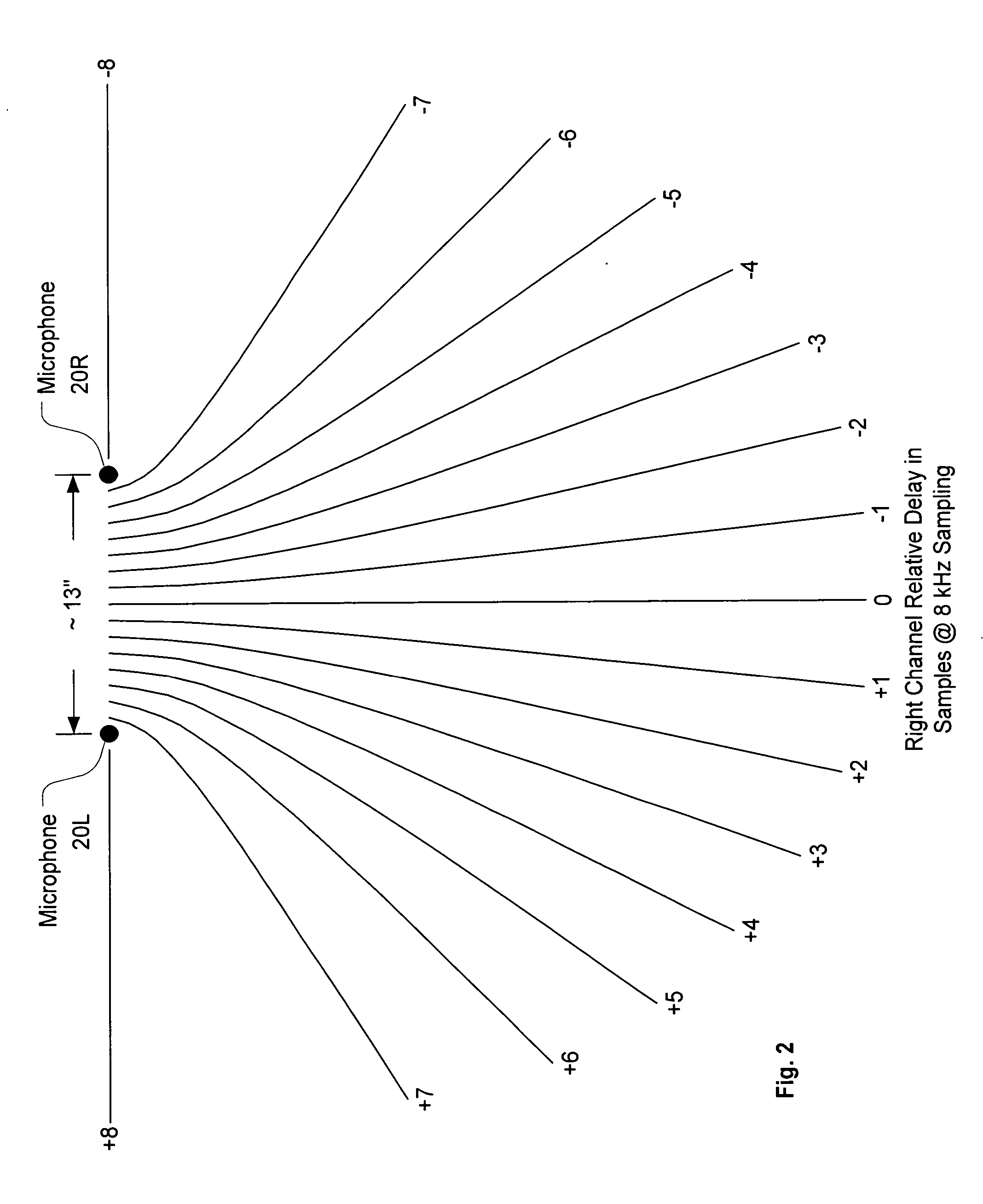System and method for stereo conferencing over low-bandwidth links
a low-bandwidth link and system technology, applied in stereophonic arrangments, instruments, substation equipment, etc., can solve the problems of roughly double the required bandwidth and unusable codecs for conference, and achieve the effect of satisfying sound quality, increasing bandwidth, and tangible benefits
- Summary
- Abstract
- Description
- Claims
- Application Information
AI Technical Summary
Benefits of technology
Problems solved by technology
Method used
Image
Examples
Embodiment Construction
[0021] In the following description, a packet voice conferencing system exchanges real-time audio conferencing signals with at least one other packet voice conferencing system in packet format. Such a system can be located at a conferencing endpoint (i.e., where a human conferencing participant is located), in an intermediate Multipoint Conferencing Unit (MCU) that mixes or bridges signals from conferencing endpoints, or in a voice gateway that receives signals from a remote endpoint in non-packet format and converts those signals to packet format. MCUs and voice gateways can typically handle more than one simultaneous conference. Note that not every endpoint in a packet voice conference need receive and transmit packet-formatted signals, as MCUs and voice gateways can provide conversion for non-packet endpoints. Such systems are also not limited to voice signals only—other audio signals can be transmitted as part of the conference, and the system can simultaneously transmit packet ...
PUM
 Login to View More
Login to View More Abstract
Description
Claims
Application Information
 Login to View More
Login to View More - R&D
- Intellectual Property
- Life Sciences
- Materials
- Tech Scout
- Unparalleled Data Quality
- Higher Quality Content
- 60% Fewer Hallucinations
Browse by: Latest US Patents, China's latest patents, Technical Efficacy Thesaurus, Application Domain, Technology Topic, Popular Technical Reports.
© 2025 PatSnap. All rights reserved.Legal|Privacy policy|Modern Slavery Act Transparency Statement|Sitemap|About US| Contact US: help@patsnap.com



